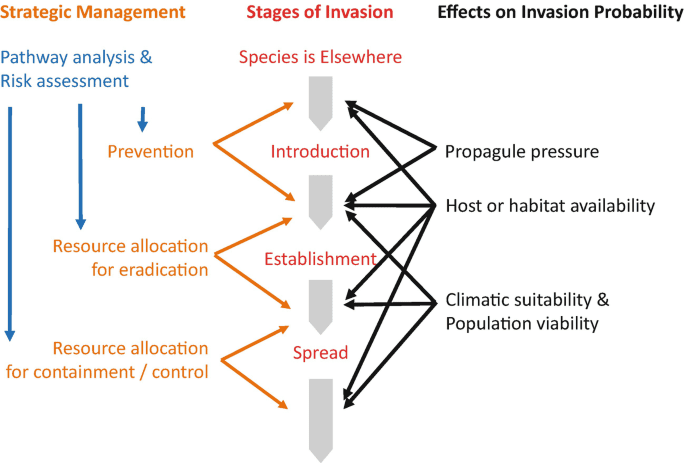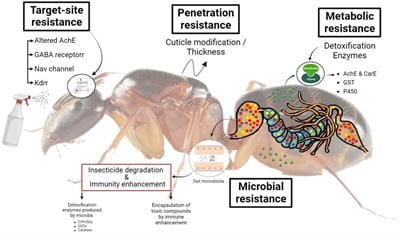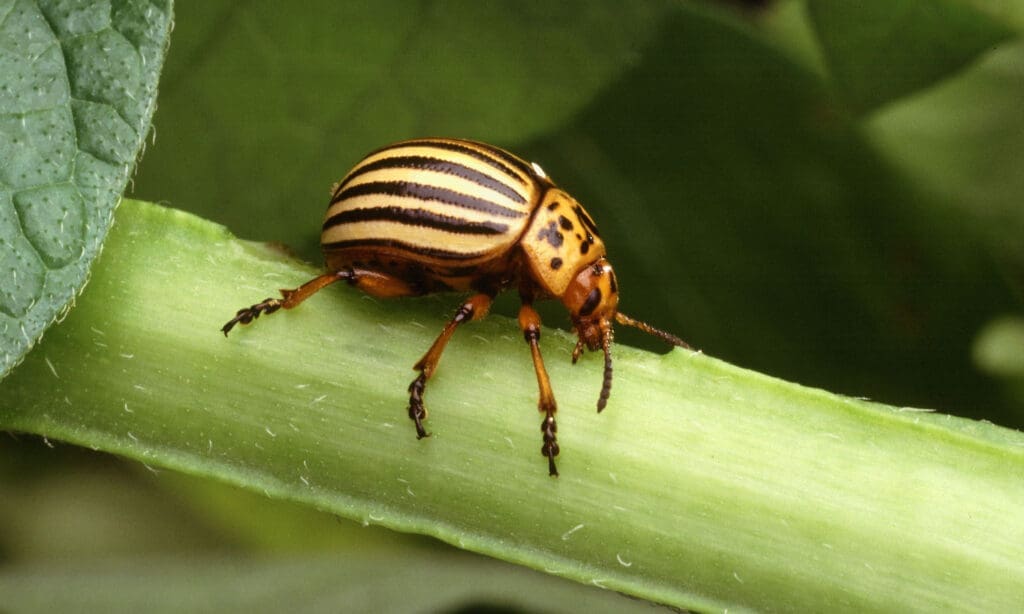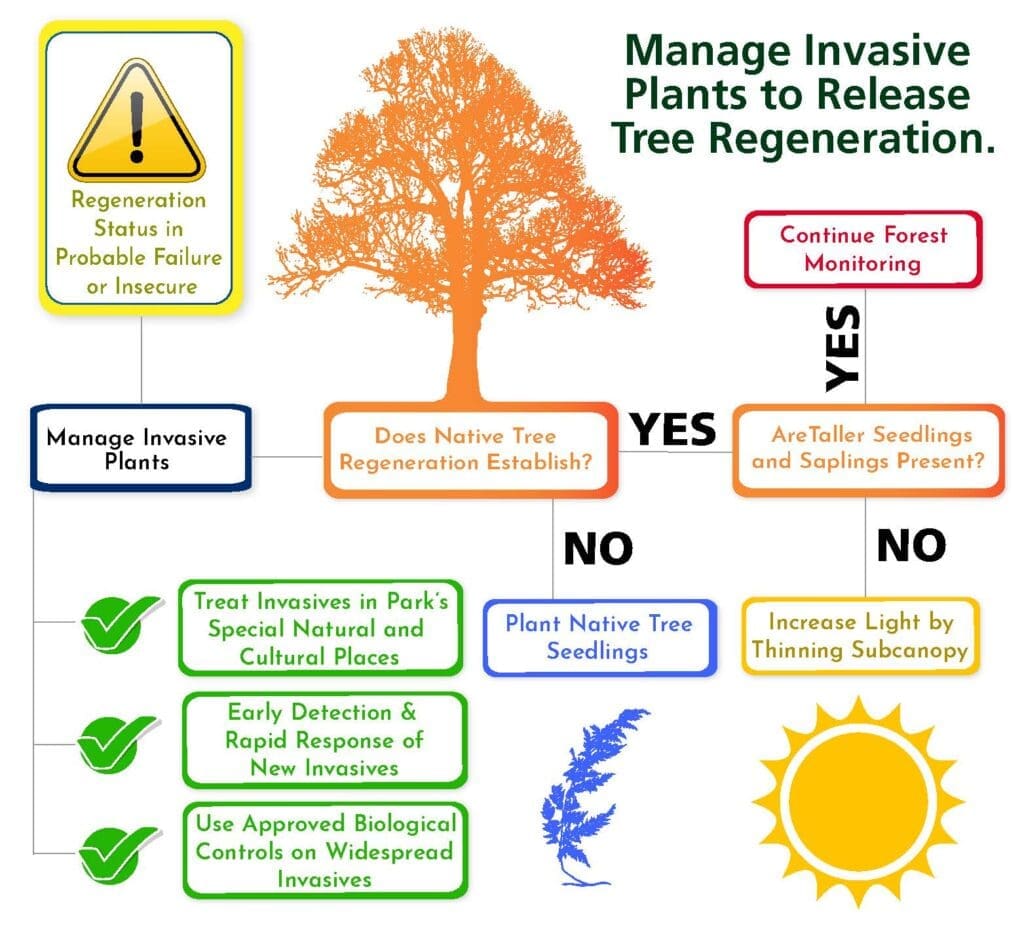In today’s world, the management of invasive pest species poses a significant challenge. These unwelcome intruders have the ability to wreak havoc on our environments, crops, and everyday lives. From destructive termites that can devastate homes to invasive plant species that threaten native ecosystems, the impact of these pests is far-reaching. This article will explore the various challenges and strategies involved in effectively managing invasive pest species, offering insights and solutions to tackle this ongoing issue head-on.

Understanding Invasive Pest Species
Defining Invasive Pest Species
invasive pest species are non-native organisms, including insects, plants, animals, and microorganisms, that have been introduced into a new environment and have the potential to cause harm to the native ecosystem, economy, and human health. These species often outcompete native species for resources and can rapidly reproduce, spreading and establishing themselves in new areas. The defining characteristic of invasive pest species is their ability to disrupt the balance of an ecosystem and cause significant damage.
Characteristics of Invasive Pest Species
Invasive pest species possess certain characteristics that make them particularly successful in their new environment. They have a high reproductive capacity, often producing large numbers of offspring. They also possess traits that allow them to easily adapt to new conditions, such as a broad diet, rapid growth, and tolerance to a wide range of environmental conditions. Invasive pest species are often highly mobile and can disperse over large distances, aided by wind, currents, or human activities. Additionally, they may lack natural predators or pathogens in their new environment, which further contributes to their ability to thrive and multiply uncontrollably.
Impact of Invasive Pest Species
The impact of invasive pest species can be far-reaching and detrimental to ecosystems, economies, and public safety. Invasive pests can aggressively outcompete native species for resources such as food, water, and habitat, leading to a decline in biodiversity and the potential extinction of native species. They can also disrupt ecosystem functions, such as nutrient cycling and pollination, which can have cascading effects on the overall health of an ecosystem. Economically, invasive pest species can cause significant damage to agriculture, forestry, and infrastructure, resulting in substantial economic losses. Invasive pests can also pose health risks to humans, through the transmission of diseases or allergic reactions, and can impact public safety, for example, by damaging infrastructure or causing accidents.
The Importance of Managing Invasive Pest Species
Threat to Ecosystems
The management of invasive pest species is crucial to protect and preserve ecosystems. Invasive pests can have profound impacts on the structure and function of natural ecosystems, leading to the loss of native species and the disruption of ecological processes. By managing and controlling invasive pest species, we can reduce their negative effects on biodiversity, maintain ecosystem stability, and ensure the long-term health of our ecosystems.
Economic Consequences
The economic consequences of invasive pest species can be staggering. Invasive pests can decimate agricultural crops and forests, resulting in reduced yields, increased production costs, and losses for farmers and landowners. The costs of managing and controlling invasive pests, including surveillance, eradication efforts, and mitigation measures, can also be substantial. By actively managing invasive pest species, we can minimize these economic losses and protect the industries that rely on healthy ecosystems.
Health Risks and Public Safety
Invasive pest species can pose significant risks to human health and public safety. Some invasive pests can transmit diseases to humans, animals, and plants, causing illness and even death. They can also lead to increased healthcare costs and put additional strain on healthcare systems. Invasive pests can damage infrastructure, such as buildings, roads, and electrical systems, posing risks to public safety. By effectively managing invasive pest species, we can mitigate these risks and ensure the well-being and safety of communities.

Factors Influencing the Spread of Invasive Pest Species
Globalization and International Trade
Globalization and international trade have facilitated the unintentional introduction and spread of invasive pest species. With the increase in global movement of goods and people, invasive pests can hitchhike on imported goods, vehicles, or even in the luggage of travelers. The global trade in plants, animals, and agricultural products has significantly increased the likelihood of introducing invasive pests into new environments. Strict biosecurity measures, such as quarantine protocols and inspections, are essential to prevent the accidental introduction of invasive pest species through international trade.
Climate Change
Climate change can also influence the spread and impact of invasive pest species. Warmer temperatures, altered precipitation patterns, and changing climates can create favorable conditions for invasive pests to thrive and expand their range. These changes can affect the distribution and abundance of native species, making ecosystems more susceptible to invasion. Additionally, climate change can impact the timing of biological events, such as flowering or migration, which can disrupt the interactions between native species and provide opportunities for invasive pests to establish themselves.
Lack of Natural Predators
Invasive pest species often lack natural predators or pathogens in their new environment, which allows them to multiply and spread rapidly. Native species have co-evolved with natural predators and have developed defense mechanisms against them. However, when invasive pests are introduced into a new environment where they have no natural enemies, their populations can explode and cause significant damage. The absence of natural predators also allows invasive pests to outcompete native species for resources, further exacerbating their impact on ecosystems.
Human Activities
Human activities, such as urbanization, deforestation, and the alteration of natural habitats, can create conditions that are conducive to the establishment and spread of invasive pest species. The fragmentation and destruction of natural habitats can displace native species and create opportunities for invasive pests to invade and colonize new areas. The transportation of goods and materials, especially in the case of international trade, can inadvertently introduce invasive pests to new regions. Moreover, recreational activities, such as boating or hiking, can unintentionally aid the spread of invasive pests by transporting them to new locations.
The Challenges Faced in Managing Invasive Pest Species
Early Detection and Rapid Response
One of the primary challenges in managing invasive pest species is the early detection and rapid response to their presence. Invasive pests often go unnoticed until they have already established themselves in an area and started causing damage. Detecting invasive pests early allows for more effective and efficient management strategies. However, the timely detection of invasive pests can be challenging due to the vastness of ecosystems and limited resources for surveillance and monitoring. Developing robust surveillance and early detection programs, along with effective communication channels, is crucial to addressing this challenge.
Coordination and Collaboration
Managing invasive pest species requires collaboration and coordination between various stakeholders, including government agencies, researchers, landowners, communities, and industries. Effective cooperation is essential to ensure that resources are utilized efficiently, prevent duplication of efforts, and facilitate the exchange of knowledge and expertise. Collaboration is also crucial for implementing integrated pest management strategies that involve multiple approaches to managing invasive pest species. Building strong partnerships and establishing effective communication networks are vital in overcoming this challenge.
Limited Resources and Funding
Limited resources and funding pose significant challenges to the management of invasive pest species. Effective management strategies require investments in surveillance, research, implementation of control measures, and public outreach initiatives. However, funding for invasive species management is often limited, and resources may need to be allocated to address other pressing environmental or societal issues. Securing adequate funding, establishing dedicated programs, and raising awareness about the economic and ecological importance of managing invasive species are critical steps in addressing this challenge.
Ethical Considerations
Managing invasive pest species also raises ethical considerations. In some cases, eradication efforts may involve the use of chemical pesticides or the physical removal of individuals or populations of invasive pests. These measures can have unintended consequences, such as harming non-target species or damaging the environment. Balancing the need to protect native species and ecosystems with the ethical considerations of preventing unnecessary harm can be a challenge. Implementing ethical frameworks and conducting thorough risk assessments are essential to ensuring that management efforts are as effective and environmentally sustainable as possible.

Methods and Techniques for Managing Invasive Pest Species
Prevention
Prevention is one of the most effective and cost-efficient approaches to managing invasive pest species. Implementing strict biosecurity measures, such as quarantine protocols, inspections, and border controls, can help prevent the accidental introduction of invasive pests through international trade and travel. Public awareness campaigns and education programs can also play a vital role in preventing the intentional release or spread of invasive pests and promoting responsible behaviors.
Monitoring and Surveillance
Monitoring and surveillance programs are essential for detecting the presence of invasive pest species early and tracking their spread. These programs involve regular surveys, trap monitoring, and data collection to assess the abundance and distribution of invasive pests. By continuously monitoring and collecting data, scientists and managers can identify areas at risk, prioritize control efforts, and evaluate the effectiveness of management strategies.
Biological Control
Biological control refers to the use of natural enemies, such as predators, parasites, or pathogens, to manage invasive pest species. This approach aims to utilize the natural regulatory mechanisms present in ecosystems to control invasive pests. Biological control methods can be highly targeted and have long-term effects, reducing the reliance on chemical pesticides. However, careful consideration must be given to ensure that the introduced biological control agents do not become invasive themselves or cause unintended harm to non-target species.
Chemical Control
Chemical control involves the use of pesticides to manage invasive pest species. Chemical pesticides can be an effective tool for controlling invasive pests, but their use must be carefully regulated to minimize environmental and human health risks. Integrated pest management (IPM) approaches, which consider a range of strategies and techniques, can help reduce the reliance on chemical control methods and maximize their effectiveness.
Mechanical and Physical Control
Mechanical and physical control methods involve physically removing or controlling invasive pest populations. These methods can include trapping, manual removal, barriers, or physical modification of habitats to prevent the establishment or spread of invasive pests. Mechanical and physical control methods are often labor-intensive and may not be suitable for large-scale management. However, they can be effective for controlling localized infestations or protecting high-value areas.
Integrated Pest Management (IPM)
Integrated Pest Management (IPM) is a holistic approach that combines multiple strategies and techniques to manage invasive pest species. IPM aims to minimize the impact on the environment, native species, and non-target organisms while effectively managing invasive pests. It integrates various control methods, such as prevention, biological control, chemical control, and cultural practices, to create a sustainable and effective pest management approach. By employing a range of strategies tailored to the specific invasive pest species and the local context, IPM offers a comprehensive and long-term solution for managing invasive pest species.
Case Studies: Successful Management of Invasive Pest Species
Asian Longhorn Beetle
The Asian Longhorn Beetle (Anoplophora glabripennis) is an invasive pest that has caused significant damage to trees in many countries. Successful management efforts have involved early detection and rapid response, including the removal and destruction of infested trees, quarantine protocols, and public outreach campaigns to raise awareness and engage the community in reporting sightings.
Cane Toads in Australia
Cane toads (Rhinella marina) were introduced to Australia in the 1930s to control sugar cane pests. However, they quickly became an invasive species, spreading across the country and causing harm to native wildlife. Management efforts have focused on population control through trapping, physical barriers, and the development of biological control methods, such as using toad-specific pathogens and parasites.
Emerald Ash Borer
The Emerald Ash Borer (Agrilus planipennis) is an invasive beetle that has caused significant damage to ash trees in North America. Effective management strategies have involved the use of biological control agents, including parasitoid wasps that target the beetle’s larvae, as well as the implementation of strict quarantine measures to prevent the movement of infested wood.
Red Imported Fire Ants
Red Imported Fire Ants (Solenopsis invicta) have invaded many parts of the world, causing economic and ecological damage. Successful management approaches include the use of chemical control methods, such as bait and mound treatments, alongside ongoing surveillance and public awareness campaigns to prevent their spread.

The Role of Technology in Invasive Pest Species Management
Remote Sensing and Geographic Information Systems (GIS)
Remote sensing and geographic information systems (GIS) play a critical role in monitoring and managing invasive pest species. Satellite imagery and aerial surveys can provide valuable data on the distribution and abundance of invasive pests, helping to identify hotspots and prioritize management efforts. GIS technology allows for the visualization and analysis of this data, facilitating decision-making and the development of effective management strategies.
DNA Barcoding
DNA barcoding is a technique that uses genetic markers to identify species. This technology has revolutionized the identification of invasive pest species, allowing for rapid and accurate identification even at the early stages of invasion. DNA barcoding can help differentiate invasive pests from native species and aid in the development of targeted control measures.
Citizen Science and Mobile Applications
Citizen science and mobile applications have become valuable tools in invasive pest species management. These platforms enable the public to actively contribute to monitoring efforts by reporting sightings, collecting data, and participating in surveillance programs. Mobile applications can provide resources for species identification, mapping tools, and educational materials, making information accessible and engaging for a wide range of users.
Legislation and Policies for Invasive Pest Species Management
International Agreements and Conventions
International agreements and conventions play a crucial role in establishing guidelines and regulations for the management of invasive pest species. These agreements foster international cooperation, facilitate information exchange, and promote collaboration in addressing the challenges posed by invasive pests. Examples include the International Plant Protection Convention (IPPC) and the Convention on Biological Diversity (CBD).
National and Regional Legislation
Many countries and regions have enacted legislation and policies specifically aimed at managing invasive pest species. These laws often define the responsibilities of government agencies, establish quarantine measures, and regulate the movement of goods and materials to prevent the introduction or spread of invasive pests. National and regional legislation lays the foundation for effective management strategies and provides a framework for coordinating efforts across different jurisdictions.
Quarantine Measures
Quarantine measures are critical for preventing the introduction and spread of invasive pest species. These measures involve the inspection and regulation of goods, vehicles, and people to ensure that they do not carry invasive pests. Quarantine protocols can include inspections at entry points, certification requirements, and the establishment of pest-free zones. By implementing strict quarantine measures, countries can reduce the risk of unintentional introductions and protect their ecosystems.
Biosecurity Protocols
Biosecurity protocols encompass a range of measures aimed at protecting ecosystems, industries, and communities from invasive pest species. These protocols include risk assessments, pathway analyses, prevention strategies, and response plans. By implementing robust biosecurity protocols, countries can reduce the likelihood of invasion, respond effectively to new introductions, and prevent the spread of invasive pests.

Educational Campaigns and Public Awareness
Promoting Understanding and Recognition
Educational campaigns and public awareness initiatives are vital for promoting understanding and recognition of invasive pest species. These campaigns aim to raise awareness about the ecological, economic, and social impacts of invasive pests, and the importance of their management. By increasing public understanding, individuals and communities can become actively involved in prevention measures, early detection efforts, and reporting sightings, contributing to a collective effort in managing invasive pests.
Engaging Local Communities
Engaging local communities is crucial for the successful management of invasive pests. Local knowledge and expertise can play a significant role in surveillance, monitoring, and the development of management strategies. By involving local communities in decision-making processes, actively seeking their input, and providing resources and training, stakeholders can create a sense of ownership and responsibility, fostering long-term engagement and sustainability in invasive pest management.
School Programs and Outreach
School programs and outreach initiatives are effective tools for educating the younger generation about invasive pest species and their management. By integrating invasive pest species education into school curricula, students can learn about the ecological impacts, economic consequences, and methods for managing invasive pests. Outreach programs can also target specific groups, such as farmers, landowners, or industry professionals, providing them with knowledge and resources to implement best management practices and prevent the introduction and spread of invasive pests.
Conclusion
Managing invasive pest species is a complex and challenging endeavor that requires a multi-faceted approach. Understanding the characteristics and impacts of invasive pests, as well as the factors contributing to their spread, is essential in developing effective management strategies. Through prevention, monitoring, biological control, and integrated pest management approaches, we can mitigate the negative impacts of invasive pests on ecosystems, economies, and human health. Collaboration, adequate resources, and engagement with stakeholders are crucial in addressing the challenges posed by invasive pests and ensuring a sustainable future for our ecosystems and communities.

I am Randy, the author behind PestControld.com. Drawing from decades of experience, I aim to provide valuable insights, expert advice, and practical recommendations to help you make informed decisions when assessing viable pest control solutions.